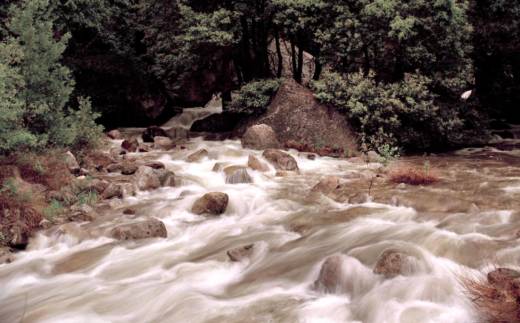What’s at Stake
The plan affects rivers flowing down from the Sierra Nevada, which are heavily used by both farms and cities. In some years, 90 percent of the water is siphoned off.
That’s contributed to a crash in salmon populations, down from around 70,000 in the mid-1980s to about 10,000 in 2017.
So, the state water board has drafted a plan to boost the flows on three rivers, the Tuolumne, Stanislaus and Merced, as part of a water quality analysis for the Sacramento-San Joaquin Delta that hasn’t been updated for more than 20 years.
“Science shows the delta has been out of balance far too long and is in ecological crisis,” said water board chair Felicia Marcus.
Water districts cried foul, saying the plan would mean losing water that feeds their local economies. That included the San Francisco Public Utilities Commission, which supplies millions of Bay Area residents with water from the Tuolumne River.
Wildlife groups said the flows wouldn’t be nearly enough to bring salmon back.
“This is not easy,” said Marcus. “This is one of the hardest decisions the board has had to make.”
The divisive debate fit a familiar script in California water of “fish vs. farms,” so the water board put out a challenge: Water districts could come up with their own plan to share water.
The negotiations began, stalled and picked up again. The water board delayed its vote, twice, to give the parties more time.
On Wednesday, state officials presented the water board with the outline of a settlement on the Tuolumne River. Water users on the Stanislaus and Merced couldn’t come to an agreement.
Still, the agreement went beyond the Tuolumne River, including the Sacramento River and other tributaries. The water board is scheduled to consider the flows on those rivers in the next phase of its water quality plan.
Depending on your view, the agreements are either a rare moment of groundbreaking cooperation or a last-ditch effort to delay something long overdue.
“I view this as a way to come up with a comprehensive solution for the Bay-Delta,” said Michael Carlin of the San Francisco Public Utilities Commission. “If you look at the whole system, that’s how you recover the fishery.”
The plans include habitat restoration, seasonal water flows for salmon and fallowing thousands of acres of land to free up water.
Still, environmental groups were quick to point out, the plans likely won’t provide the river flows currently in the water board’s plan.
“On the Tuolumne River, it really doesn’t represent that significant an improvement over existing conditions in many ways,” said Gary Bobker of the Bay Institute.
“While there was a lot of lipstick that was presented today, underlying that seems to be a pig in the poke,” said Doug Obegi of the Natural Resources Defense Council.
The water board plans to do an environmental analysis on the voluntary agreements, which are expected to be more fleshed out by March.
Some water districts cautioned that the agreements may fall apart if the board voted to adopt the flow plan.
“There’s a risk, in my opinion, that we’re all going to be diverted into other processes and that very elusive thing called momentum might be lost,” said Kevin O’Brien, an attorney representing water districts on the Sacramento River.
To actually return water to the rivers, the water board will undertake a water rights review, which could limit some of the oldest water rights holders in the state. Litigation will almost certainly follow.
